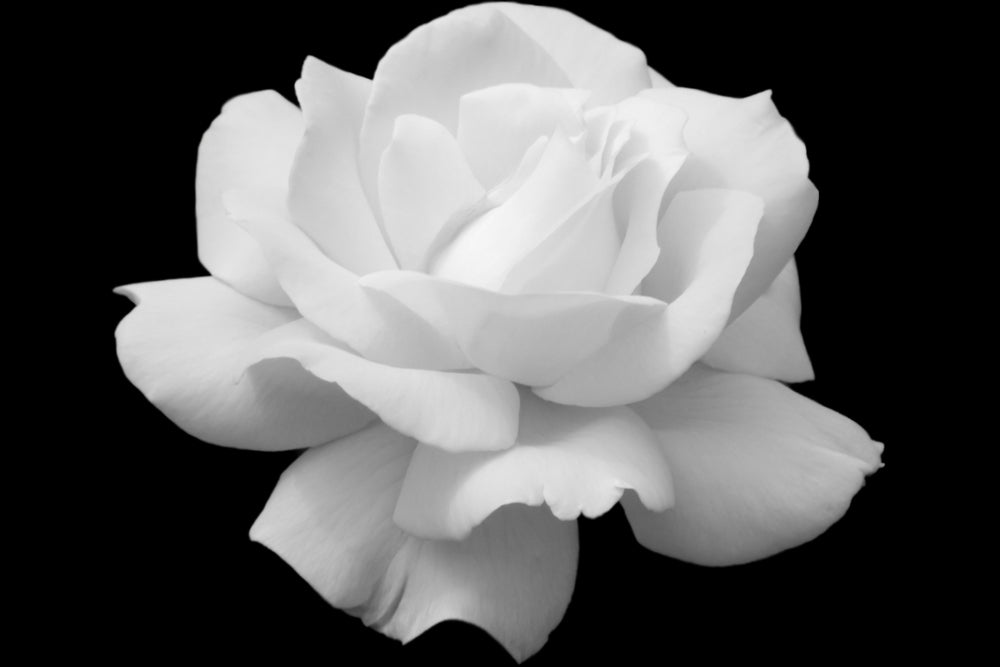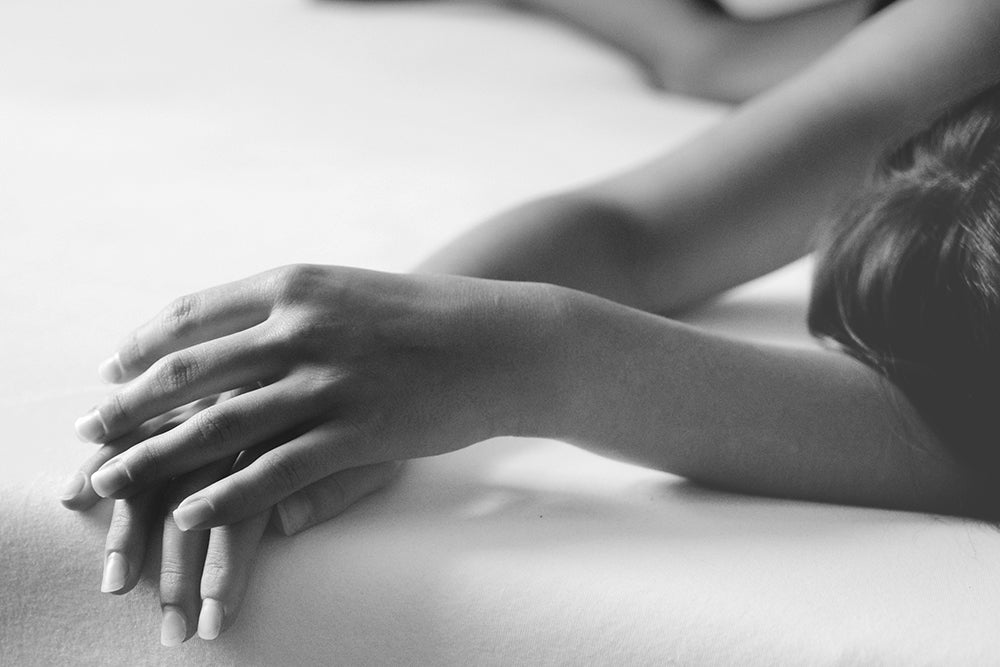
be clean, beauty

the bottom line
What is clean beauty? We’re not entirely sure, either, but we do know that the definition of clean skin care varies from one brand to the next. We think that clean should refer not only to the ingredients in the beauty product, but also the level of a brand’s transparency and ethics. In essence, then, clean is what you make it. Here, we break it down, layer by layer, to define (and refine) what clean beauty truly means. Read on for more of the good stuff.
first layer: clean for the body
When we look at what we put on our skin and into our bodies, it starts with the ingredients. As opposed to natural beauty, which refers to the source of the ingredients themselves, clean beauty implies that the ingredients have been tested for safety in addition to efficacy, and that specific, potentially harmful, ingredients have not been included.1 Clean beauty products generally avoid at least the following ingredients: parabens, phthalates, synthetic fragrance, sulfates, ethoxylated substances, formaldehyde, hydroquinone, and triclosan. Let’s break each one down for a better idea of the risks and benefits:
Parabens:
Parabens are particularly powerful preservatives which have been extensively used in the beauty world to prevent the growth of bacteria and mold in water-based products. Although parabens have been used in food and cosmetic skin care formulations for years, there is growing concern over alleged estrogenic and antiandrogenic effects.
Phthalates:
Phthalates are a class of chemicals used as solvents and to keep plastics flexible. There is data that links specific phthalates to such disorders as asthma, breast cancer, and male infertility.2
Synthetic fragrance:
The exact ingredients of fragrances aren’t always listed for proprietary reasons, but they can contain potential allergens. So, if you are allergic to certain ingredients in essential oils, you may need to steer clear of products which list only “fragrance” in their ingredient decks.
Sulfates:
Sulfates are often used to create lather and bubbles in cleansers and shampoos. You may see them listed as “sodium lauryl sulfate”, or “sodium laureth sulfate”. Sulfates themselves have not been shown to be toxic in humans, but they can be very harsh on hair and skin.
Ethoxylated substances:
Ethoxylation is a chemical process in which ethylene oxide is added to a substrate and converted to a chemical used in surfactants.3 Look for ingredients including polyethylene glycols (PEG’s), ceteareths, oleth, and sulfates. The main health issue is a by-product of the process, 1,4-dioxane, a chemical which the Environmental Protection Agency has listed as a potential carcinogen.4
Formaldehyde:
Another widely used preservative, formaldehyde is found in keratin hair treatments. It has been classified as a carcinogen by the International Agency for Research on Cancer.5
Hydroquinone:
This one is a bit controversial. Hydroquinone is used as a skin lightener to treat hyperpigmentation and is available at concentrations of 2% in over-the-counter products in the United States. There is a small risk of ochronosis, a syndrome with discoloration of the skin, but there are no documented cases to date of associated malignancy.6 Hydroquinone has been banned or restricted in personal care products by the European Union, Japan, Australia, Ghana, South Africa, Rwanda, Cote d’Ivoire, and Tanzania.7
Triclosan:
Triclosan is an anti-microbial which has been used for preservation of skin care products since the 1960’s. Although there is a relative lack of data on effects of triclosan in humans, the FDA has acknowledged the potential risk of neurological toxicity by banning the use of triclosan in consumer soaps.8
These aren’t the only ingredients that are left off the decks of clean beauty products. Some retailers have stringent lists of banned ingredients which include, in addition to the above, aluminum chlorohydrate, butylated hydroxyanisole (BHA) and butylated hydroxytoluene (BHT), butoxyethanol, chemical UV blocks, coal tar, ethylenediaminetetraacetic (EDTA), ethanolamines, mercury, methyl cellosolve, methylisothiazolinone and methylchloroisothiazolinone, mineral oil, nanoparticles, phenoxyethanol, propanol, resorcinol, and toluene.9
second layer: clean for the environment
Clean beauty is about the environmental impact, too. This is where we call in clean beauty’s cousin, sustainable beauty. Sustainable ingredients are generally accepted to be those which have been sourced ethically and proven to be safe for the environment. This also implies that natural ingredients which are in limited supply, or which have a large environmental impact, should be replaced with those more readily available and which leave a smaller footprint. Palm oil is an obvious example. To produce palm oil, large regions of trees in the tropical rainforest must be cleared. The result is deforestation with a loss of animal habitats. However, palm oil can be produced responsibly, and it is the clean beauty brand’s responsibility to research options with less environmental impact.10 Keep in mind that even water is considered to be an ingredient with a potentially limited supply.
Clean beauty extends to packaging, too. Sustainable packaging is typically glass packaging, biodegradable packaging, post-consumer recycled packaging, or recyclable packaging.10
third layer: ethics
This is just our opinion, but we think that clean beauty should extend to all life, not just the two-legged variety. So, we suggest that clean beauty products be cruelty-free as well. Not only should our skin care products not be tested on animals, the ingredients we use shouldn’t be, either. In 2013, the European Union banned the sale of animal-tested cosmetics. The ban applies to both the skin care products, as well as their ingredients, whether or not there are alternatives.11
fourth layer: the future is…clean
Ultimately, it’s up to you as the consumer to determine what “clean” means to you, and which brands resonate best with you when deciding upon your beauty routine. We love the philosophy taken by Formula Botanica that clean beauty should include wellbeing, transparency and ethics, environmental responsibility, and safe and hygienic formulations – which includes using natural preservatives for water-based products.12
A little plug: anokha has practiced clean beauty since the beginning, back in 2008. Rather than focusing on what is not in our clean skin care products, however, we prefer to tell you all about the wonderful ingredients we’ve included after meticulous study of their safety and efficacy profiles. We are acutely aware of the very limited supply of Indian sandalwood and switched out to Australian sandalwood in our jasmine serum several years ago. We’ve also changed our packaging over the years to primarily glass bottles and jars, and have moved over to orifice reducers rather than droppers for our oils and serums. anokha already has a large number of waterless products, with more slated for release in the near future. Finally, anokha is pleased to be certified by both Leaping Bunny and PETA Cruelty Free.
All this and more at www.anokhaskincare.com .
Add a layer by joining our newsletter .
xx
anokha
references:
- https://www.popsugar.com/beauty/What-Clean-Beauty-45987369
- https://www.theguardian.com/lifeandstyle/2015/feb/10/phthalates-plastics-chemicals-research-analysis
- https://en.wikipedia.org/wiki/Ethoxylation#Human_health
- https://www.harpersbazaar.com/beauty/skin-care/a28352553/clean-beauty/
- International Agency for Research on Cancer (June 2004). IARC Monographs on the Evaluation of Carcinogenic Risks to Humans Volume 88 (2006): Formaldehyde, 2-Butoxyethanol and 1-tert-Butoxypropan-2-ol. Retrieved March 14, 2020 from: http://monographs.iarc.fr/ENG/Monographs/vol88/index.php
- Nordlund JJ, Grimes PE, Ortonne JP: The safety of hydroquinone. J Eur Acad Dermatol Venereol 2006; 20(7): 781-787.
- https://www.refinery29.com/en-us/hydroquinone-cream-uses
- Ruszkiewicz JA, Li S, Rodriguez MB, Aschner M: Is Triclosan a Neurotoxic Agent? J Toxicol Environ Health B Crit Rev 2017 20(2): 104-117.
- https://www.thedetoxmarket.com/pages/banned-ingredients 9
- https://www.shape.com/lifestyle/beauty-style/whats-difference-between-clean-beauty-natural-beauty-products
- https://ec.europa.eu/growth/sectors/cosmetics/animal-testing_en 1
- https://formulabotanica.com/podcast-clean-beauty-redefinition/



leave us a comment
This site is protected by hCaptcha and the hCaptcha Privacy Policy and Terms of Service apply.